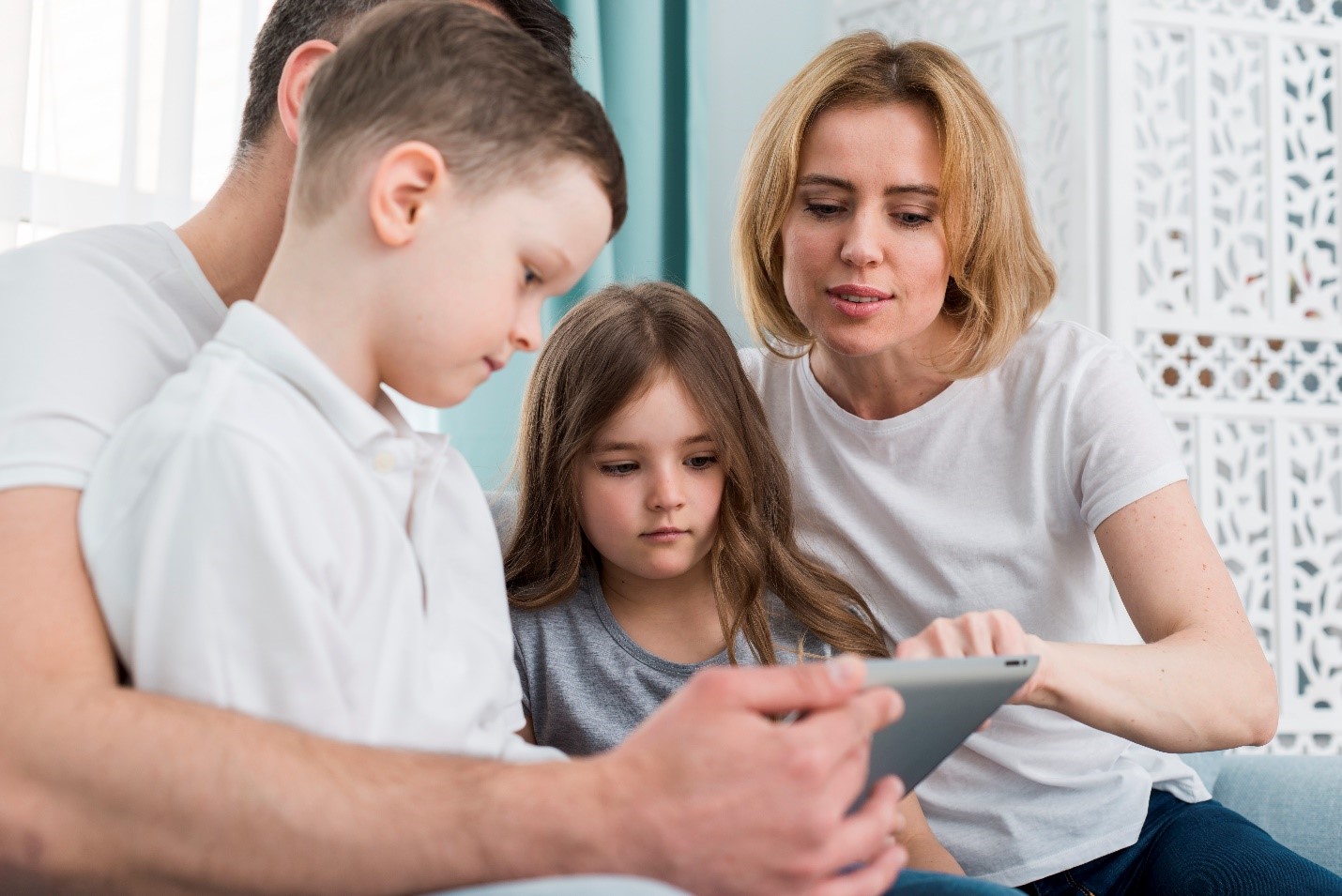Why Screen Time Shapes Self‑Esteem
Teens spend an average of 4.5 hours daily on image‑focused apps—Instagram, TikTok, Snapchat. Filters blur reality; algorithmic feeds surface “perfect” bodies that trigger upward comparison. A 2024 JAMA Pediatrics meta‑analysis linked every additional hour on these platforms to a 13 percent rise in body‑dissatisfaction scores . Neuro‑imaging shows likes light up the brain’s reward center, making teens chase curated looks for social validation.
Body‑Image Red Flags You Can Spot
| Digital Behavior | Possible Concern | What to Ask |
| Deletes posts if likes < 100 | External validation loop | “What made you remove that photo?” |
| Follows only fitness or “thinspo” accounts | Restrictive‑eating risk | “How do those posts make you feel?” |
| Uses multiple editing apps (Facetune, etc.) | Appearance anxiety | “Why edit—what are you changing?” |
| Nighttime scroll marathons | Sleep loss elevates cortisol | Establish device curfew |
Early conversation beats crisis intervention—bring curiosity, not judgment.
How Social Platforms Skew Reality
- Algorithm Amplification – Engagement signals push extreme bodies higher in feeds.
- Face & body filters – Shrink waistlines, smooth skin, enlarge eyes—setting impossible baselines.
- Hashtag rabbit holes – #WhatIEatInADay or #GymTok normalize obsessive tracking.
- Comparison culture – Teens compare backstage life to others’ highlight reels, ignoring angles, lighting, and editing.
For a deeper dive into algorithms, see NYU’s Center for Social Media and Politics report on teenage feeds — link opens in a new tab.
Five Evidence‑Based Parent Strategies
1. Co‑Scroll & Comment
Sit with your teen for 15 minutes of feed scrolling. Praise media literacy (“Notice how the background warps?”) rather than critiquing their follow list.
2. Set “Read Receipts” on Likes
Encourage posting meaningful captions; focus on storytelling instead of selfies. Teens who share skill‑based content report higher self‑esteem .
3. Curate Positive Feeds
Help them follow body‑neutral or body‑positive creators—athletes of diverse sizes, adaptive‑sport influencers, science communicators.
4. Enforce a Bedroom Tech Curfew
Blue light plus emotional content delays melatonin; aim for screens off by 10 p.m. Better sleep equals better mood and body satisfaction.
5. Model Healthy Self‑Talk
Ban “I need to diet” comments in front of kids; adolescents mirror parental body attitudes.
Home‑to‑Clinic Signal Scale
| Sign | Rating 0–3 | Action |
| Calorie‑counting apps | 2+ → discuss in clinic | |
| Skips family meals | 2+ → dietitian referral | |
| Body‑checking mirror time | 2+ → CBT handout | |
| Mood dips after selfies | 2+ → mental‑health screen |
Score 6+ overall? Schedule a counseling consult.
Talking Points That Work
Instead of: “Stop worrying about your looks.”
Try: “I notice you’ve edited your jawline. What are you hoping to change?”
Open‑ended questions invite feelings; commands shut doors.
Myth‑Busting Corner
Myth 1: “Boys don’t face body‑image issues.”
Reality: Muscle dysmorphia and supplement misuse are rising—16 percent of teen boys use protein powders to “bulk up,” studies show.²
Myth 2: “Deleting social apps solves it.”
Reality: Cold‑turkey bans provoke sneaky accounts; co‑usage and literacy build lasting resilience.
Myth 3: “TikTok filters are harmless fun.”
Reality: Repeated exposure links to body‑dissatisfaction spikes even after brief use.³
School & Coach Collaboration
- Provide counselors with wellness passes; teens can decompress when comparison spirals hit.
- Encourage coaches to emphasize performance goals over weight metrics; use vertical jump, 40‑yd dash, or agility tests.
Sample 7‑Day Body‑Positivity Challenge
| Day | Activity |
| 1 | Follow 3 inclusive creators |
| 2 | Write 5 gratitude points about your body |
| 3 | Cook a balanced snack, post recipe photo |
| 4 | Try a new sport move, share progress clip |
| 5 | Compliment a friend’s skill online |
| 6 | Pick one “unfiltered selfie” to share with family chat |
| 7 | Clean feed—mute any account that triggers comparison |
Complete the series together; shared effort lessens stigma.
Role of Professional Support
| Specialist | When to Refer | Expected Benefit |
| Licensed counselor (CBT) | Persistent negative self‑talk | Reframe body distortions |
| Dietitian (HAES‑trained) | Yo‑yo dieting, macro obsession | Normalize fuel vs restriction |
| Physician | Amenorrhea, dizziness, rapid weight change | Rule out eating disorders |
Confidential teen counseling slots open—HIPAA‑protected sessions ensure privacy.
External Resources Teens Respect
- Center for Humane Technology “Ledger” Tool – tracks social time, promotes mindful use.
- National Eating Disorders Association (NEDA) Teen Chatline – text‑based peer support.
Both open in new tabs so this guide stays front‑and‑center.
Quick Reference Cheat‑Sheet for Parents
- Co‑scroll weekly.
- Curate body‑positive feeds.
- Watch language—model kindness to your own body.
- Enforce tech‑off hour before bed.
- Seek help at first signs of obsession.
Snap this list—stick on the fridge.
The Bottom Line
Social media can inspire creativity—or erode body confidence. With guided usage, open dialogue, and timely professional support, teens learn to separate digital distortion from real‑life worth.
Ready to Talk One‑on‑One?
Confidential teen counseling slots open—our pediatric team screens mood, body image, and social‑media stress, then links teens to in‑house counselors for tailored care.







